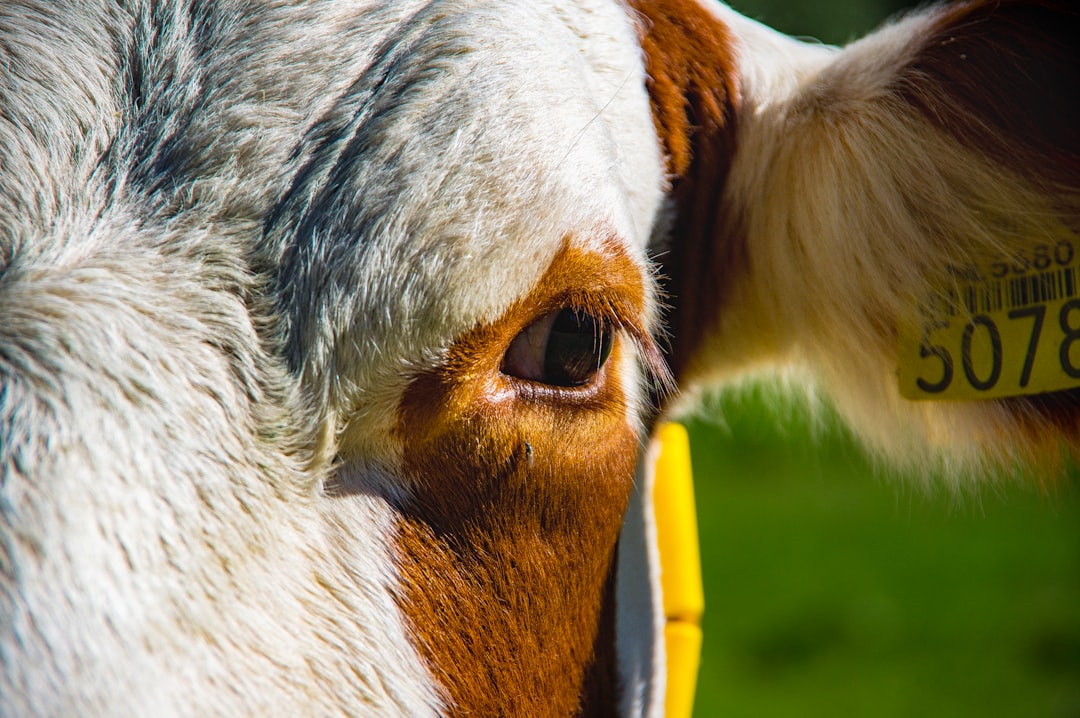

Engage prospects with a scan and streamline customer engagement with FREE QR code marketing tools by Sona – no strings attached!
Create a Free QR CodeFree consultation

No commitment

Engage prospects with a scan and streamline customer engagement with FREE QR code marketing tools by Sona – no strings attached!
Create a Free QR CodeFree consultation

No commitment
Animal health product suppliers often face significant challenges when it comes to delivering timely, relevant customer education that impacts loyalty, regulatory compliance, and purchasing decisions. Outdated materials and static approaches such as printed brochures or product inserts fail to offer traceability or personalization, which results in high-value prospects going untracked and ultimately lost sales. In a category where safety, efficacy, and compliance are always under scrutiny, relying on analog workflows can undermine both trust and revenue.
The sector also struggles with anonymous purchasers, gaps in product usage understanding, and confusion around regulatory requirements. Traditional data collection frequently leaves suppliers in the dark about visitors’ real intent, while generic compliance sheets rarely reach decision-makers. These gaps are especially damaging when clinics need instant assurance on batch-level safety, usage protocols, or a clear escalation path for incident reporting.
With digital transformation accelerating, QR codes are emerging as a crucial bridge between physical inventory, compliance requirements, and efficient, trackable education. By converting packaging, invoices, and displays into interactive touchpoints, QR codes allow instant access to usage guides, safety data, recall alerts, or certification updates without the hassle of app downloads or manual searching. The result is a more responsive learning and compliance ecosystem where every scan creates a measurable insight and a chance to move buyers closer to informed action. For example, turning packaging into a live entry point is straightforward with product packaging.

Building genuine customer trust and ensuring compliance in animal health product distribution are both undermined by outdated, paper-centric workflows. Suppliers often find that high-value prospects browse materials, research products, or handle compliance checks without ever submitting contact details, which leaves them lost to follow-up and retargeting efforts. Incomplete data and missed engagement signals contribute to churn and cause both education gaps and regulatory vulnerabilities.
QR codes replace slow, analog processes with instant, measurable interactions. Paper forms can become mobile-optimized incident submissions via Google Forms QR. Static brochures can be swapped for dynamic, multilingual usage guides and videos. On-package inserts that go out of date can be replaced with digital documentation that is always current. The key is to link each physical touchpoint to a digital destination that answers the precise question a buyer has in that moment, then capture scan behavior so the next interaction is smarter.
Modern QR-enabled platforms let suppliers continuously refine educational content, adapt to regulatory changes quickly, and map engagement back to the right buyer segments. The outcome is a virtuous cycle where each scan leads to better content, clearer compliance, and stronger commercial results.

Animal health product suppliers face the dual demands of ever-shifting regulations and rapidly changing customer needs. Persistent pain points include missed segmentation opportunities caused by incomplete visitor data, static compliance efforts that fail to reach clinicians at the moment of decision, and wasted spend tied to disconnected or outdated campaigns. QR codes address these challenges by meeting buyers where they are and making action seamless, including veterinary storefronts.
A QR code is not just a link. It is a contextual prompt that guides clinicians, retail staff, and distributors to the exact piece of information they need: the latest safety sheet, a dosing calculator, or a product comparison. It also records the moment of interest so your team can learn which placements and messages are working. When implemented across packaging, invoices, and training materials, QR codes create a connected learning experience that is both faster for the user and more measurable for the supplier.
When thoughtfully deployed, QR codes help suppliers close knowledge gaps, demonstrate regulatory diligence, and streamline the customer journey from first scan to repeat purchase.

Selecting the right QR format is crucial for both education and compliance. A poor format choice can limit flexibility or reduce scan rates, while the right one can simplify workflows and help your teams keep information accurate without reprinting. In animal health, the most effective formats are those that translate complex tasks into simple, mobile-first actions.
Dynamic QR codes are especially valuable because they let you change destinations without altering the printed code. A brochure printed for an annual conference can keep working for years, pointing to updated videos or new certificates as regulations evolve. Static codes still have a place, particularly for evergreen documents where trackability is less critical, but most customer education and compliance use cases benefit from dynamic flexibility.
Dynamic formats allow you to adapt destinations to language preference, role, or location. For example, one code can serve different content to a distributor in a warehouse, a clinic staffer at a shelf, or a retailer on a trade floor.

For many animal health suppliers, the biggest losses happen in the unmeasured spaces between physical and digital interactions. A clinician takes a brochure but never visits the website. A distributor places an order but skips the training link buried in an email. Strategic QR placement turns those blind spots into measurable touchpoints, which creates better education outcomes and more predictable growth.
Audit where questions most often arise and where decisions are made. Map those moments to the most relevant QR destinations, then instrument each placement with analytics and clear calls to action. Over time, your scan data will reveal which channels produce the most engagement and which audiences respond to specific educational prompts.
By aligning QR placements with real-world workflows, suppliers create a continuous learning loop. Each scan informs the next iteration of content, elevates compliance consistency, and brings hidden revenue opportunities to the surface.

Personalizing education and compliance at scale is challenging in a category that serves clinics, retailers, distributors, and end consumers. CRM data often lacks context, and generic website analytics cannot tell you why a user engaged or what they needed. QR-enabled interactions help solve this by tying intent to place, time, and content type.
Consider how different stakeholders interact with your products. A clinician needs dosing precision and safety validation. A distributor needs spec sheets, certifications, and re-order workflows. A retail associate needs customer-friendly product education. You can serve all three with contextually placed codes that route to role-specific resources and capture the signals your teams need for follow-up.
These use cases transform static materials into interactive experiences that capture intent and clarify next steps. The impact is felt across customer satisfaction, compliance consistency, and lifetime value.
Anonymous research is a persistent challenge in animal health. Clinicians often browse quietly, take a brochure, or consult a colleague, and the supplier never learns what information sparked interest. QR codes make these moments measurable. Each scan records context and intent, which you can use to build segments that fuel precise retargeting and timely education.
Design your QR architecture with segmentation in mind. Assign unique codes to journey stages, product families, and physical placements. Use the data to separate veterinary buyers seeking compliance validation from retail partners exploring new lines, and to distinguish pre-purchase research from post-purchase support. Integrate these signals into your CRM and marketing automation so the next touch is tailored and immediate. For tactics, see intent-driven retargeting.
The result is a smarter retargeting engine fueled by real buyer behavior rather than guesswork. You will engage the right people with the right message at the right time, which compounds conversion and retention over multiple cycles.
Animal health product suppliers often run campaigns across print catalogs, packaging, events, email, and distributor channels. Without a common thread, buyers encounter inconsistent messages and your teams struggle with offline attribution. QR codes connect these channels by turning every physical asset into a digital gateway that is easy to measure and optimize.
Think of QR codes as the onramp to your digital marketing engine. A clinician scanning a label can be routed to a dosing calculator or a safety sheet. A trade show visitor scanning a banner can land on a meeting scheduler. A retailer scanning a catalog can jump to a product comparison page. Each scan adds a datapoint to your analytics, so future campaigns become more precise and more profitable.
A centralized QR platform simplifies code creation, destination management, and analytics. With Sona QR, teams can deploy and update codes quickly, monitor performance across channels, and sync scan activity with CRM and ad platforms for a unified view of the buyer journey.
Start by identifying the business outcome you need most. In animal health, common goals include untracked compliance validation at the point of care, lost follow-up after trade events, and stale educational resources that do not evolve with regulations. Choose one use case to pilot so you can measure impact clearly.
Match QR deployments to the moments that matter. For example, if clinics frequently call support for dosing clarity, place a QR on the label that links to a calculator and a short video. If trade show leads go dark, place a QR on booth signage that routes to a scheduler and add UTM parameters to attribute booked meetings back to the event.
Static QR codes are suitable for permanent, non-changing resources such as ingredient disclosures or a universal company contact page. They are simple to print and require no ongoing management, but they cannot be updated after printing and they do not provide detailed analytics.
Dynamic QR codes are trackable and editable. They allow you to change destinations when regulations shift, run A/B tests on content, and collect scan data by time, device, and location. For most education, compliance, and marketing use cases in animal health, dynamic codes provide the flexibility and insight you need to scale. Start creating QR codes for free.
Design affects scan rates. Add your logo, brand colors, and a clear frame so the code stands out. Place a short, benefit-driven call to action adjacent to the code such as Scan for recall alert or Access seasonal dosing updates. Keep the code size large enough for scanning in the expected environment, typically at least 2.5 cm square for close range and larger for signage.
Test in real conditions. Scan on multiple devices under clinic lighting, warehouse fluorescent lights, and trade show glare. Check angles, distances, and print materials from matte labels to glossy brochures. Confirm that the destination loads fast on mobile and that the content is optimized for small screens.
Prioritize placements where data loss or missed follow-up historically occurs. Shipping labels, distributor catalogs, event handouts, and clinic shelf talkers are often high-value starting points. Tie each placement to a distinct destination and tag it with UTMs for granular attribution.
Roll out in phases. Start with a few high-traffic products or events, collect baseline metrics, and iterate on design and placement before scaling. Communicate the change to partners and staff so they can explain the benefits of scanning to customers.
Integrate scan data into your analytics stack. With Sona QR, you can track scans by time, device, and location, measure conversion behavior, and monitor drop-off points. Connect Sona QR to your CRM to automatically enrich account records and trigger workflows or alerts.
Use data to refine campaigns in real time. Test variations of call-to-action language, code placement, and landing page design. Shift budget and attention toward placements that consistently produce high-intent actions such as certificate views, form submissions, or demo bookings.
A persistent frustration for animal health suppliers is tying physical interactions to revenue. You may see foot traffic at shows, scans on shelf labels, or responses to direct mail, yet the engagement does not always translate into lead enrichment or sales because the data is siloed. Closing this gap requires a platform that captures scan context, connects to your CRM, and attributes impact across the journey.
With the right analytics in place, every scan becomes a behavioral signal. You can identify which products draw interest, which regions are most engaged, and which placements drive conversions or compliance actions. Most importantly, you can move from anonymous activity to named accounts in your CRM so education and sales outreach are coordinated.
Sona QR captures real-world engagement across your physical assets, and Sona helps connect those engagements to revenue through identity resolution and buyer journey analytics. This turns QR initiatives into a measurable component of your performance marketing strategy.
Scaling QR success comes down to consistency, clarity, and continuous optimization. The more you standardize code creation, destination tagging, and follow-up workflows, the easier it becomes to compare performance and invest where it matters. Educating staff and partners is just as important as designing codes. A well-placed QR will underperform if no one knows why to scan it or what they will receive, and these veterinary QR ideas can help spark adoption.
Think of this as building a habit for your customers and internal teams. Clinicians learn that scanning yields faster answers. Distributors learn that scanning simplifies compliance checks. Your own team learns to analyze scans as leading indicators of demand and satisfaction. Over time, this habit compounds results and lowers support costs.
For animal health product suppliers, QR codes are fundamentally redefining knowledge delivery, regulatory transparency, and commercial impact across the supply chain. As the risk of missing or misidentifying high-value prospects diminishes and real engagement signals become visible, each scan becomes an opportunity to convert educational and compliance moments into measurable outcomes. By integrating QR technology thoughtfully into both physical and digital workflows, suppliers can institute proactive education, seamless compliance tracking, and adaptive marketing that elevates them as trusted, customer-first leaders in a technology-driven ecosystem.
QR codes have transformed the animal health product suppliers industry by turning traditional product labels and packaging into dynamic, interactive tools for customer education and engagement. Whether it’s providing instant access to detailed product information, usage instructions, or health tips, QR codes empower suppliers to enhance customer trust, improve product knowledge, and drive informed purchasing decisions.
Imagine your customers scanning a code and instantly receiving tailored advice or veterinary insights that boost their confidence and loyalty. With Sona QR, you can create dynamic, trackable QR codes in seconds, update content anytime without reprinting, and link every scan to measurable customer engagement and sales growth. No missed opportunities—just smarter, more impactful connections.
Start for free with Sona QR today and transform every scan into an opportunity to educate, engage, and expand your customer base.
The article does not list specific top-rated suppliers but emphasizes selecting suppliers who deliver timely, relevant customer education and ensure compliance through modern digital tools like QR codes.
Ensure quality and safety by using QR codes on product packaging and documentation that provide instant access to batch-level safety data, usage protocols, recall alerts, and compliance certificates.
Animal health product suppliers offer products including medications, vaccines, diagnostic tools, nutritional supplements, and veterinary compliance documentation.
Integrate QR codes by placing them on product labels, packaging, clinic supplies, and point-of-sale materials to provide instant access to usage guides, compliance certificates, training modules, and reorder forms, enhancing customer education and engagement.
QR codes enable instant verification of compliance certificates and batch safety data, track customer engagement by capturing scan data, improve regulatory transparency, and support timely follow-up with high-value prospects.
Use Sona QR's trackable codes to improve customer acquisition and engagement today.
Create Your FREE Trackable QR Code in SecondsJoin results-focused teams combining Sona Platform automation with advanced Google Ads strategies to scale lead generation

Connect your existing CRM

Free Account Enrichment

No setup fees
No commitment required

Free consultation

Get a custom Google Ads roadmap for your business






Launch campaigns that generate qualified leads in 30 days or less.
